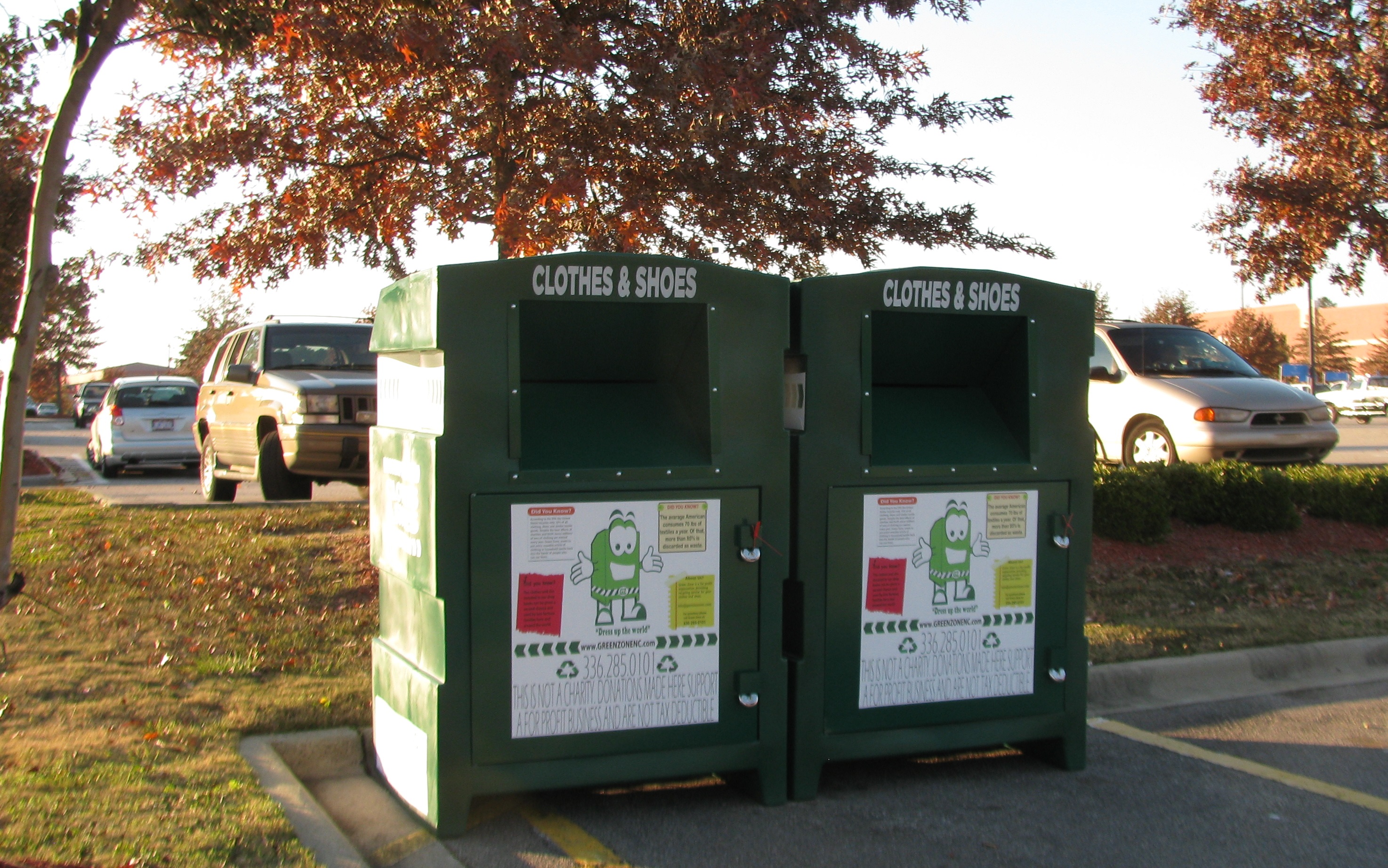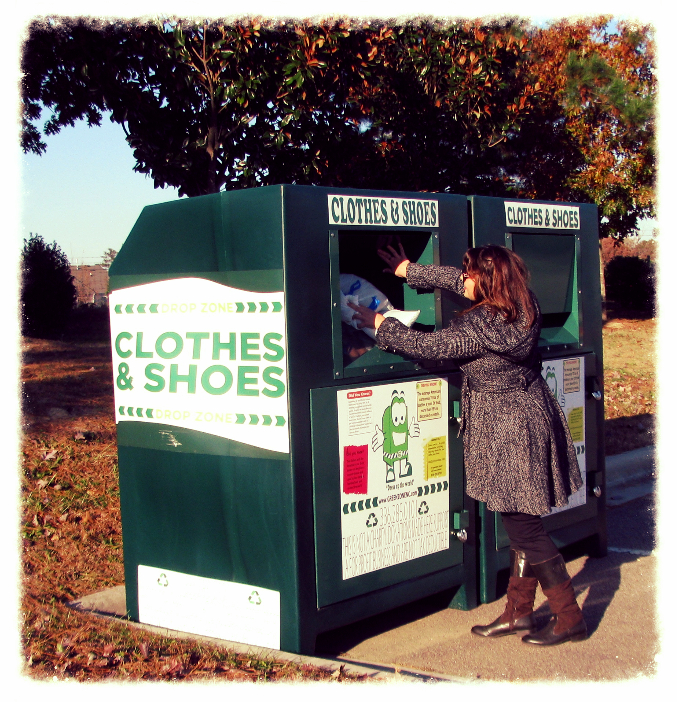MYRTLE BEACH, SC (WBTW) – Liz Ward, the VP of Internal Operations for Green Zone Recycling joined News13 NOW at 9 a.m. on Thursday to talk about clothing and shoe donation bins and how they are often a gateway into textile recycling.

The bins are one way to keep clothing and other textiles out of landfills. EPA studies show discarded textiles have increased 71% in the U.S. in the last 15 years. Only 20% of that textile waste is collected to be reused or recycled. Landfills that reach capacity are an environmental and financial concern for local governments.
Green Zone puts bins in front of many businesses to collect clothing and shoes and many other textiles. The company is one of the few that openly explains it collects worn, torn and stained clothing and other fabric that likely would not be donated to others to wear. While many of the donations can be worn again by others, non-wearable textiles can also be dropped into the collection bins. Collecting those materials keeps the textiles out of landfills, which can save local communities money. Again, while few donation bins explain the potential for donations to be recycled, they can often accept much more than typical clothing and shoe donations. Ward recommends referencing the following list of recyclable textiles from the Secondary Materials and Recycling Textiles (SMART) Association.
| · Bedding: comforter, sheets, pillow cases, blankets | · Purses |
| · Belts | · Scarves |
| · Boots | · Shirts |
| · Bras | · Shoes (single or in pairs) |
| · Coats | · Shorts |
| · Curtains/Draperies | · Skirts |
| · Dresses | · Slippers |
| · Flip flops | · Socks (single or in pairs) |
| · Halloween costumes | · Stuffed animals |
| · Hats | · Suits |
| · Jackets | · Sweaters |
| · Jeans | · Sweatpants |
| · Jerseys (sports) | · Sweatshirts |
| · Napkins (cloth) | · Table linens |
| · Pajamas | · Ties |
| · Pants | · Towels |
| · Pet beds & clothing | · T‐shirts |
| · Pillows (recyclable, but preferably not in bins because of bulkiness) | · Undergarments |
Ward explained that whether you take your clothing and other textiles to a thrift store (including charities) or to donation bins, much of it will not be used in the way you may expect. For example, thrift shops and charities end up with lots of clothing they cannot sell in their stores or that they cannot give away to people in need. Many items considered unsellable end up in landfills.
However, the secondhand clothing that is not thrown away – whether it comes from bins or thrift shops/charities – can go to private sector recyclers. Those recyclers sort and separate the textiles into three general groups:
- 45% is reused and re-purposed, mostly exported to other countries as secondhand clothing
- 30% is recycled and converted into reclaimed wiping rags that are used in various ways as industrial and residential absorbents
- 20% is recycled into post-consumer fiber that is used to make home insulation, carpet padding and raw material for the automotive industry
There have been some concerns and misunderstandings about the bins though. A common misunderstanding relates to how charities my be related to the bins. Many bins associate themselves with a charity, leading some people to believe their clothing donations are doing to those charities directly. However, as explained above, most donations go to textile recycling sorters. Some of the money earned in the process may go back to the charities, but the amount is often unknown, and the process can feel misleading to people who don’t get full explanations.
Sometimes, charities themselves operate the bins. Again, the clothing collected rarely goes to the charities though. Instead, the charity generates revenue by sending the donations to the textile sorters.
Ward said Green Zone is an example of a company that uses bins that state their for-profit status and the main focus of keeping textiles out of landfills.
In addition to those misunderstandings about charity connections, appearance and maintenance concerns have also come up. Some reclamation operators (who are responsible for the bins) do not maintain them well – allowing them to become unsightly. Some also do not handle collections well, especially if unapproved items are left outside the bins.
These concerns have led some local governments to ban the collection bins or to only allow non-profit bins, or to heavily restrict their location, Ward said large sweeping regulations may not effectively address the concerns though. For example, a non-profit may not have the resources to maintain a bin neatly or collect unwanted bulky items. So a restrictions that only allows non-profits doesn’t address those concerns.
Ward said she hopes people, including local government leaders will see the bins as a service to people and ultimately a way to keep more stuff out of landfills. She thinks it would be helpful for people to think of textile recycling just as they do recycling plastics,aluminum, paper and glass. The drop-off bins aim to handle textiles in a similar matter to those more well-known recyclables. Green Zone and other companies are working with local governments to make textile recycling as normal as recycling household plastics.
Find out more about Green Zone on the company’s website: www.greenzonenc.com.

Business owners, churches, community centers, schools, apartment communities and commercial real estate agents can send a quote request to Green Zone Recycling on their website: http://www.greenzonenc.com/host-a-bin/ To host a collection bin or clothing drive you can also contact Green Zone Recycling by email at info@greenzonenc.com or call 1-800-767-1284.
The Council for Textile Recycling and the SMART Association are also good sources of information about textile recycling.Companies with textile recycling programs
Some companies have been working to be part of textile recycling with their own programs. For example, H&M, Patagonia and The North Face will collect clothing and send it to be recycled. Levi’s Jeans and American Eagle Outfitters are other examples of companies working to reduce the amount of textiles that use up natural resources and go to landfills.



